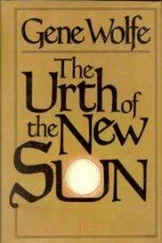Tom Wolfe - The Right Stuff
Здесь есть возможность читать онлайн «Tom Wolfe - The Right Stuff» весь текст электронной книги совершенно бесплатно (целиком полную версию без сокращений). В некоторых случаях можно слушать аудио, скачать через торрент в формате fb2 и присутствует краткое содержание. Жанр: Современная проза, на английском языке. Описание произведения, (предисловие) а так же отзывы посетителей доступны на портале библиотеки ЛибКат.
- Название:The Right Stuff
- Автор:
- Жанр:
- Год:неизвестен
- ISBN:нет данных
- Рейтинг книги:3 / 5. Голосов: 1
-
Избранное:Добавить в избранное
- Отзывы:
-
Ваша оценка:
- 60
- 1
- 2
- 3
- 4
- 5
The Right Stuff: краткое содержание, описание и аннотация
Предлагаем к чтению аннотацию, описание, краткое содержание или предисловие (зависит от того, что написал сам автор книги «The Right Stuff»). Если вы не нашли необходимую информацию о книге — напишите в комментариях, мы постараемся отыскать её.
The Right Stuff — читать онлайн бесплатно полную книгу (весь текст) целиком
Ниже представлен текст книги, разбитый по страницам. Система сохранения места последней прочитанной страницы, позволяет с удобством читать онлайн бесплатно книгу «The Right Stuff», без необходимости каждый раз заново искать на чём Вы остановились. Поставьте закладку, и сможете в любой момент перейти на страницу, на которой закончили чтение.
Интервал:
Закладка:
So this was the task that a handful of pilots, engineers, and mechanics had at Muroc. The place was utterly primitive, nothing but bare bones, bleached tarpaulins, and corrugated tin rippling in the heat with caloric waves; and for an ambitious young pilot it was perfect. Muroc seemed like an outpost on the dome of the world, open only to a righteous few, closed off to the rest of humanity, including even the Army Air Force brass of command control, which was at Wright Field. The commanding officer at Muroc was only a colonel, and his superiors at Wright did not relish junkets to the Muroc rat shacks in the first place. But to pilots this prehistoric throwback of an airfield became… shrimp heaven! the rat-shack plains of Olympus!
Low Rent Septic Tank Perfection… yes; and not excluding those traditional essentials for the blissful hot young pilot: Flying & Drinking and Drinking & Driving.
Just beyond the base, to the southwest, there was a rickety wind-blown 1930's-style establishment called Pancho's Fly Inn, owned, run, and bartended by a woman named Pancho Barnes. Pancho Barnes wore tight white sweaters and tight pants, after the mode of Barbara Stanwyck in Double Indemnity . She was only forty-one when Yeager arrived at Muroc, but her face was so weatherbeaten, had so many hard miles on it, that she looked older, especially to the young pilots at the base. She also shocked the pants off them with her vulcanized tongue. Everybody she didn't like was an old bastard or a sonofabitch. People she liked were old bastards and sonsabitches, too. "I tol' 'at ol' bastard to get 'is ass on over here and I'd g'im a drink." But Pancho Barnes was anything but Low Rent. She was the granddaughter of the man who designed the old Mount Lowe cable-car system, Thaddeus S. C. Lowe. Her maiden name was Florence Leontine Lowe. She was brought up in San Marino, which adjoined Pasadena and was one of Los Angeles' wealthiest suburbs, and her first husband—she was married four times—was the pastor of the Pasadena Episcopal Church, the Rev. C. Rankin Barnes. Mrs. Barnes seemed to have few of the conventional community interests of a Pasadena matron. In the late 1920's, by boat and plane, she ran guns for Mexican revolutionaries and picked up the nickname Pancho. In 1930 she broke Amelia Earhart's air-speed record for women. Then she barnstormed around the country as the featured performer of "Pancho Barnes's Mystery Circus of the Air." She always greeted her public in jodhpurs and riding boots, a flight jacket, a white scarf, and a white sweater that showed off her terrific Barbara Stanwyck chest. Pancho's desert Fly Inn had an airstrip, a swimming pool, a dude ranch corral, plenty of acreage for horseback riding, a big old guest house for the lodgers, and a connecting building that was the bar and restaurant. In the barroom the floors, the tables, the chairs, the walls, the beams, the bar were of the sort known as extremely weatherbeaten, and the screen doors kept banging. Nobody putting together such a place for a movie about flying in the old days would ever dare make it as dilapidated and generally go-to-hell as it actually was. Behind the bar were many pictures of airplanes and pilots, lavishly autographed and inscribed, badly framed and crookedly hung. There was an old piano that had been dried out and cracked to the point of hopeless desiccation. On a good night a huddle of drunken aviators could be heard trying to bang, slosh, and navigate their way through old Cole Porter tunes. On average nights the tunes were not that good to start with. When the screen door banged and a man walked through the door into the saloon, every eye in the place checked him out. If he wasn't known as somebody who had something to do with flying at Muroc, he would be eyed like some lame goddamned mouseshit sheepherder from Shane .
The plane the Air Force wanted to break the sound barrier with was called the X-1 at the outset and later on simply the X-1. The Bell Aircraft Corporation had built it under an Army contract. The core of the ship was a rocket of the type first developed by a young Navy inventor, Robert Truax, during the war. The fuselage was shaped like a 50-caliber bullet—an object that was known to go supersonic smoothly. Military pilots seldom drew major test assignments; they went to highly paid civilians working for the aircraft corporations. The prime pilot for the X-1 was a man whom Bell regarded as the best of the breed. This man looked like a movie star. He looked like a pilot from out of Hell's Angels . And on top of everything else there was his name: Slick Goodlin.
The idea in testing the X-1 was to nurse it carefully into the transonic zone, up to seven-tenths, eight-tenths, nine-tenths the speed of sound (.7 Mach,.8 Mach,.9 Mach) before attempting the speed of sound itself, Mach 1, even though Bell and the Army already knew the X-1 had the rocket power to go to Mach 1 and beyond, if there was any beyond . The consensus of aviators and engineers, after Geoffrey de Havilland's death, was that the speed of sound was an absolute, like the firmness of the earth. The sound barrier was a farm you could buy in the sky. So Slick Goodlin began to probe the transonic zone in the X-1, going up to.8 Mach. Every time he came down he'd have a riveting tale to tell. The buffeting, it was so fierce—and the listeners, their imaginations aflame, could practically see poor Geoffrey de Havilland disintegrating in midair. And the goddamned aerodynamics—and the listeners got a picture of a man in ballroom pumps skidding across a sheet of ice, pursued by bears. A controversy arose over just how much bonus Slick Goodlin should receive for assaulting the dread Mach 1 itself. Bonuses for contract test pilots were not unusual; but the figure of $150,000 was now bruited about. The Army balked, and Yeager got the job. He took it for $283 a month, or $3,396 a year; which is to say, his regular Army captain's pay.
The only trouble they had with Yeager was in holding him back. On his first powered flight in the X-1 he immediately executed an unauthorized zero-g roll with a full load of rocket fuel, then stood the ship on its tail and went up to.85 Mach 1n a vertical climb, also unauthorized. On subsequent flights, at speeds between.85 Mach and.9 Mach, Yeager ran into most known airfoil problems—loss of elevator, aileron, and rudder control, heavy trim pressures, Dutch rolls, pitching and buffeting, the lot—yet was convinced, after edging over.9 Mach, that this would all get better, not worse, as you reached Mach 1. The attempt to push beyond Mach 1—"breaking the sound barrier"—was set for October 14, 1947. Not being an engineer, Yeager didn't believe the "barrier" existed.
October 14 was a Tuesday. On Sunday evening, October 12, Chuck Yeager dropped in at Pancho's, along with his wife. She was a brunette named Glennis, whom he had met in California while he was in training, and she was such a number, so striking, he had the inscription "Glamorous Glennis" written on the nose of his P-51 in Europe and, just a few weeks back, on the X-1 itself. Yeager didn't go to Pancho's and knock back a few because two days later the big test was coming up. Nor did he knock back a few because it was the weekend. No, he knocked back a few because night had come and he was a pilot at Muroc. In keeping with the military tradition of Flying & Drinking, that was what you did, for no other reason than that the sun had gone down. You went to Pancho's and knocked back a few and listened to the screen doors banging and to other aviators torturing the piano and the nation's repertoire of Familiar Favorites and to lonesome mouse-turd strangers wandering in through the banging doors and to Pancho classifying the whole bunch of them as old bastards and miserable peckerwoods. That was what you did if you were a pilot at Muroc and the sun went down.
Читать дальшеИнтервал:
Закладка:
Похожие книги на «The Right Stuff»
Представляем Вашему вниманию похожие книги на «The Right Stuff» списком для выбора. Мы отобрали схожую по названию и смыслу литературу в надежде предоставить читателям больше вариантов отыскать новые, интересные, ещё непрочитанные произведения.
Обсуждение, отзывы о книге «The Right Stuff» и просто собственные мнения читателей. Оставьте ваши комментарии, напишите, что Вы думаете о произведении, его смысле или главных героях. Укажите что конкретно понравилось, а что нет, и почему Вы так считаете.











